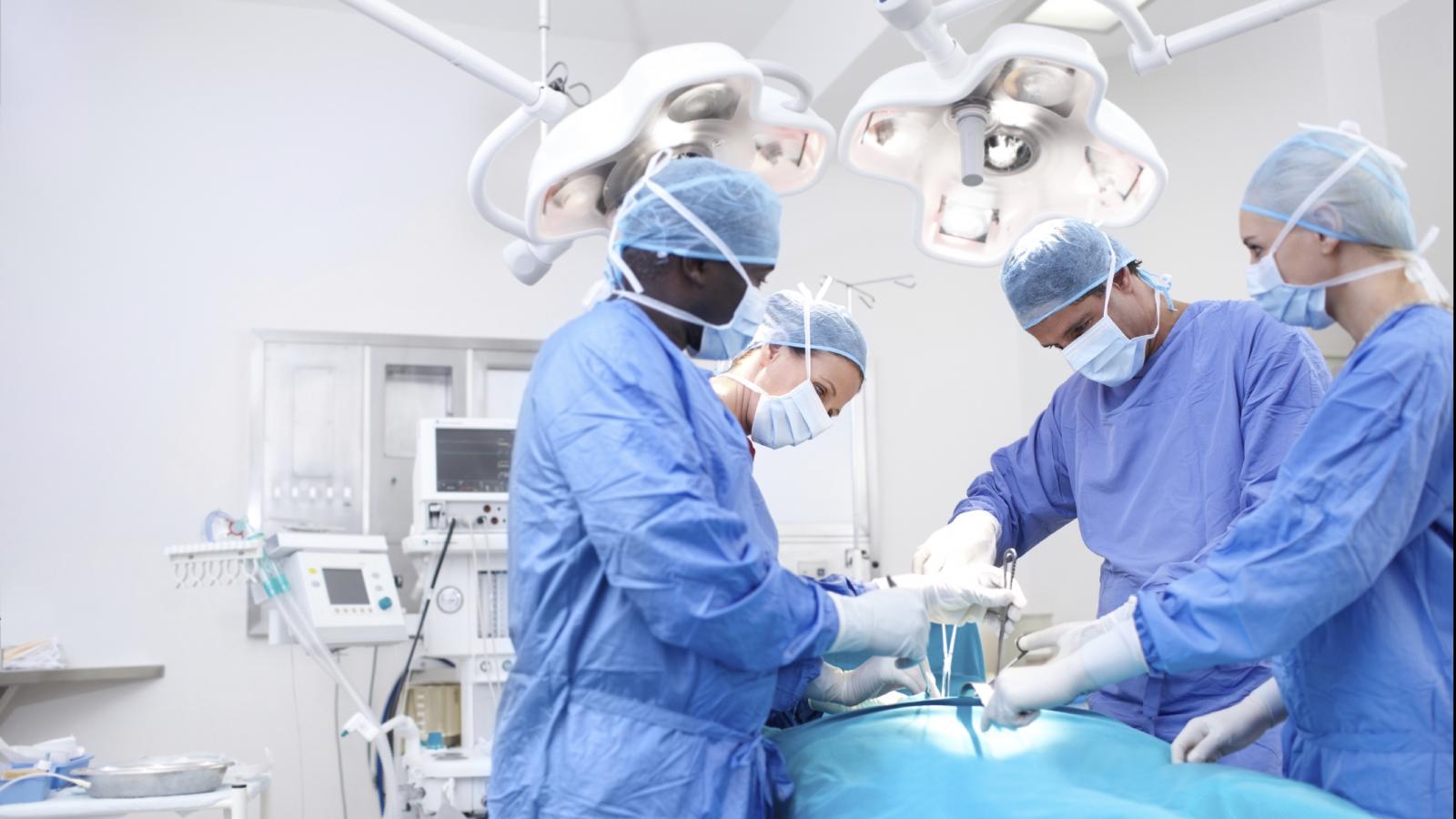Surgery for mouth, head and neck cancer

Surgery is one of the main treatments for head, neck and mouth cancers. The aim of surgery is to remove the cancer cells and nearby tissue. If the cancer is found early, surgery can often cure it.
Trans-oral surgery
Some early cancers of the mouth, throat and larynx may be treated using laser surgery. This form of surgery takes place in the operating room, but the cancer is removed through the mouth, rather than through a cut (incision) in the neck. Your surgeon and care team will decide if you are suitable for this type of treatment.
Nasal endoscopic surgery
This is where a tumour is removed through the nose, using an endoscope, which is a tube containing a light source and camera. The surgery is done with very small tools, and does not need an external incision (cut). This type of surgery is sometimes used for nasal cavity or paranasal sinus cancers.
Robot-assisted surgery
This is a type of surgery that uses a computer and robotic arms to help to remove the tumour.
Open surgery
Here an external cut is made to allow your surgeon to access the tumour and remove it.
Surgery for higher stage cancer
Depending on where the tumour is found, your surgeon may need to remove skin, muscle or bone along with your cancer. This can be replaced by a skin or muscle flap or a prosthesis. In some cases your surgeon may also remove lymph nodes in your neck. Your surgeon will explain what to expect after surgery and if any scarring will happen.

Discuss your surgery fully with your surgical team so that you know exactly what is going to be removed and how it may affect you afterwards. For example, if you might look different.
Reconstructive surgery
The surgery might affect how you eat or drink or how you look. Reconstructive surgery can help to ‘rebuild’ the area to give you the best possible function and appearance.
The surgeon who does this type of surgery is called a plastic surgeon or a maxillofacial surgeon.
- Skin flaps: A skin flap is a thick piece of skin taken from another part of your body, usually your forearm or chest, which can replace skin from the mouth or throat lining or the face removed during surgery.
- Microvascular free flap: This is where tissue is taken from another part of the body and includes the blood vessels (artery and vein) that supply this tissue. Using a microscope, they connect these vessels to a blood supply in the head or neck. The ‘free flap’
can include skin, muscle, bone or a combination of each depending on what needs to be reconstructed. - Bone graft: A piece of bone is taken from another part of your body and used to replace a section of jawbone removed during cancer surgery.
- Prosthesis: A prosthesis is a special soft plastic device which reconstructs the area where bone has been removed and closes the opening. For example, your surgeon may need to remove some of your facial bones such as your cheekbone or palate.
- Obturator: This is a type of a prosthesis like a retainer or denture with an extension to replace the missing section of your upper jaw or palate. This prosthesis is provided by a special dentist called a maxillofacial prosthodontist. During your surgery a temporary obturator will be put in place. Once the area is healed this obturator will be replaced by a new one.
After mouth, head and neck surgery
You will need to stay in hospital for several days or even weeks, depending on the type of surgery you had. You will need some time to recover at home afterwards as well.
You may not be able to eat normally, so you may be fed by a tube in your nose, through your stomach or by giving nutrients into a vein. Read more about nutrition after surgery.
You may have a tracheostomy if there is swelling or bruising around your mouth, which can make breathing uncomfortable. This is an opening in your windpipe that you can breathe through.
Read more about what happens after surgery.
Side-effects of mouth, head and neck surgery
- Breathing problems
- Speaking problems
- Pain
- Changes to your appearance
Breathing problems
If you have swelling or bruising around your mouth it can make breathing uncomfortable. Sometimes your surgeon may decide to make an opening into your windpipe to help you breathe more easily during and after surgery. This is called a tracheostomy or stoma.
You may be given special mask to wear over your tracheostomy. This lets you breathe humidified oxygen, which is special air to help keep your airway moist.
Laryngectomy stoma
If your larynx is fully removed (during a ‘laryngectomy’), you will have a permanent opening from your windpipe to the front of your neck. A small soft plastic tube will keep the stoma open initially following surgery. Your nurses and physiotherapists will help you to care for your stoma and do breathing exercises after your surgery.
After a laryngectomy, you cannot use your voice box (larynx) in the normal way. Your doctors, nurses and speech and language therapist will help you to communicate. You will be supported in learning to speak in a new way using a specially created ‘speaking valve’.
Speech
Some surgery to your mouth and throat can affect the way you speak. Your mouth, tongue, teeth, lips, nose, throat (pharynx) and soft palate are all involved in speech. Surgery to any of these areas can affect the way you speak. Some people may not notice a change in the way they speak, but for others speech can be changed temporarily or permanently. A speech and language therapist will help you with any speech problems you are having.
Pain
Tell your nurses and doctors if you have any pain. There are lots of effective painkillers. It’s important to control any pain to help you recover and get back to eating and speaking again.
If your pain relief isn’t helping, tell your medical team so they can give you a different sort. If you cannot eat properly you will be given painkillers by injection or in liquid form through your nasogastric or PEG tube.
Changes to your appearance
Surgery to your head or neck area can change your appearance. It can be difficult to adjust to these changes, but there is a lot of help available in the hospital and through support organisations. Read more on where to get support.
Neck lymphoedema
Lymphoedema is a swelling caused by a build-up of lymph fluid. This
can happen if lymph nodes have been removed or it can be caused by radiotherapy to the neck.
It’s important to manage lymphoedema as early as possible, so let your doctor know if you have:
• Swelling or feeling of pressure or tightness around the eyes, face, lips or neck
• Difficulty moving your neck, jaw, or shoulders
• Difficulty swallowing, speaking, or breathing
Nerve issues
Sometimes surgery can affect the nerves that control your lip or shoulder movement. You may notice your smile is crooked or your shoulder might feel stiff. This may last a few months but it usually gets better in time. Your doctor will refer you to a physiotherapist who will show you some exercises to help with this.
For more information
Phone
1800 200 700


